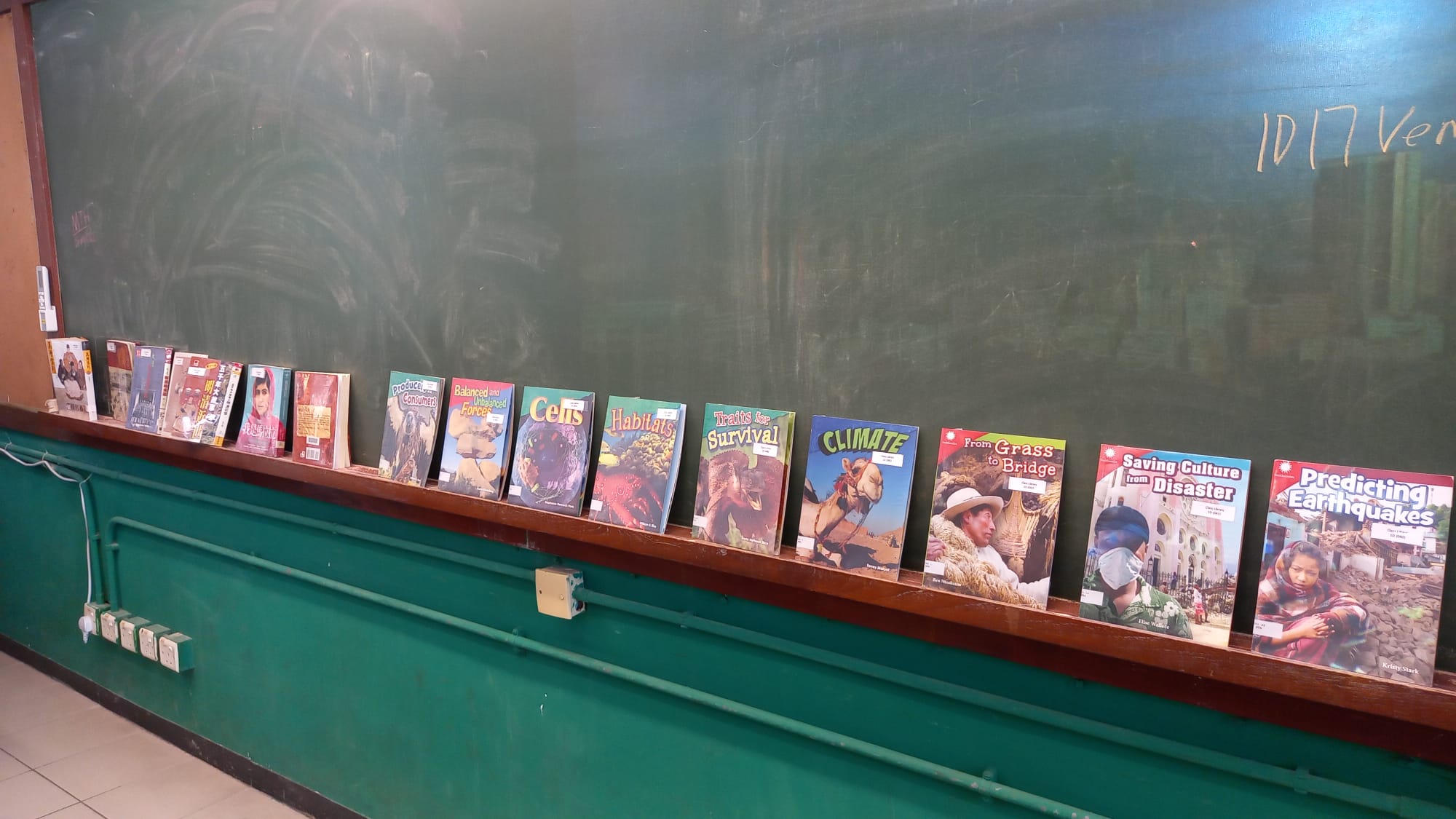Nonfiction Reading Programme S1-S3
Objectives:
- To enable junior students to adopt nonfiction reading strategies
- To develop the metacognitive strategies of goal setting and self-evaluation
Students set yearly goals at the beginning of an academic year and short-term goals at approximately two-month intervals. They monitor and evaluate their reading progress at the end of each phase and at the end of the year.
- To promote learner autonomy through the provision of choice
Students can decide how much they read, what books to read and what reader response to make. Slightly over 50 nonfiction books in Chinese and English are made available in the class library, but students can read books from elsewhere. They can do oral book sharing with their reading teacher, peers and through a lunch-time oral book sharing activity. They can also choose to do a written task from more than 15 tasks available.














